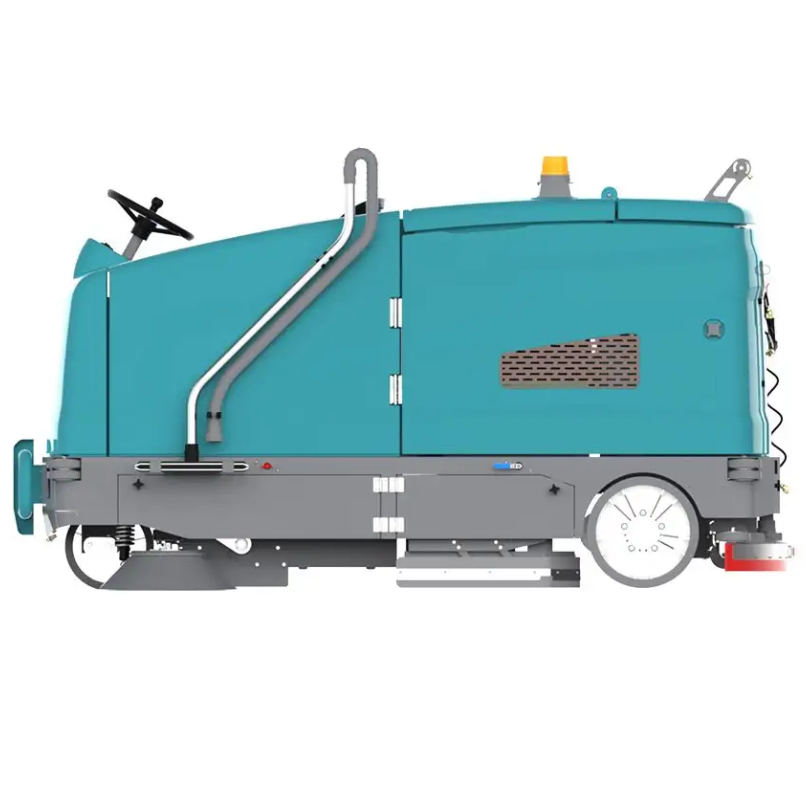The Science Behind Industrial Scrubber Operation
Absorption vs. Adsorption in Contaminant Removal
In industrial scrubber operation, absorption and adsorption play crucial roles in the removal of contaminants. Absorption involves the uptake of a substance throughout the volume of a liquid medium, making it highly effective for capturing soluble gases. On the other hand, adsorption attracts and holds particles on the surface of a solid material, an essential process for purifying gas streams laden with particulate matter. The practical implications of these processes are significant in industrial applications. While absorption facilitates the removal of gases, adsorption is often employed for capturing volatile organic compounds and other particulate pollutants.
Materials like activated carbon and chemical solvents are commonly used in scrubbers for these processes. Activated carbon, renowned for its high surface area and porous structure, excels in adsorption applications, effectively removing various pollutants. Chemical solvents, conversely, are solvents that can dissolve gases and are often utilized in processes requiring absorption. Studies, such as those in environmental engineering, highlight the efficiency of these methods. For example, research has shown that activated carbon can remove over 90% of certain pollutants, reinforcing its critical role in industrial applications.
Chemical Reaction Dynamics in Scrubbing Processes
Chemical reaction dynamics are pivotal to the effectiveness of scrubbing processes. Scrubbers utilize reactions like neutralization and oxidation to convert harmful substances into less toxic forms. Neutralization involves the interaction of acids with bases, producing salt and water, while oxidation adds oxygen to a compound, breaking down pollutants into less harmful substances. The dynamics of these reactions are influenced by factors such as temperature and pH levels, which can enhance or hinder the efficiency of contaminant removal.
Data from research indicates varying success rates of these chemical processes in capturing harmful gases. For instance, studies have shown that neutralization processes can remove up to 80% of acidic gases from emissions. Additionally, advancements in materials, such as catalytic substances, have improved reaction efficiencies. These materials, by accelerating reactions without being consumed, enhance the scrubbing capability, making modern scrubbers more effective than ever before.
Types of Industrial Scrubbers: Mechanisms and Applications
Wet Scrubber Systems: Liquid-Based Pollution Control
Wet scrubber systems play a vital role in liquid-based pollution control by removing contaminants from industrial exhaust streams using a liquid medium, typically water. The operational mechanics involve a gas inlet where polluted gases enter and are exposed to the scrubbing liquid, which then captures or dissolves pollutants. This process ensures the effective removal of harmful substances from the gas stream before releasing the cleaned gas into the environment.
There are several types of wet scrubbers, each designed for specific applications. Venturi scrubbers use a high-velocity gas stream to create a spray of liquid droplets that remove fine particulates and gases. Meanwhile, packed bed scrubbers utilize a bed of packing material to increase the contact area between the gas and liquid, enhancing contaminant removal. Industries such as chemical manufacturing and power generation widely use wet scrubbers due to their efficiency in controlling a range of pollutants. Case studies consistently highlight the effectiveness of these systems, which have been proven to achieve over 95% reduction in pollutants like sulfur dioxide and particulate matter.
Dry Scrubber Technology: Gas-Phase Neutralization
Dry scrubber technology is an innovative solution for gas-phase neutralization, primarily utilized to neutralize acidic gases and remove particulates without the need for a liquid medium. These systems operate by passing polluted air through a dry reagent or absorbent material, facilitating the capture of contaminants. This method is particularly effective for removing acidic gases such as sulfur dioxide (SO2) and hydrogen chloride (HCl), making it highly valuable for industries that require efficient removal of these pollutants.
The primary advantage of dry scrubbers is their lower operational cost compared to wet systems, primarily due to reduced water usage and minimal waste disposal requirements. Moreover, they eliminate the complexity associated with handling liquid waste, which is a significant consideration in wet scrubbers. Industries such as petrochemical processing and metal refining heavily rely on dry scrubbers for their ability to reduce emissions effectively. Their adoption has substantially impacted emissions reduction, with findings indicating up to a 90% decrease in harmful gas releases in certain industrial applications.
Particulate Matter Removal in Industrial Scrubbers
Impaction and Interception Principles
In industrial scrubbers, the principles of impaction and interception are crucial for the efficient removal of particulate matter. Impaction occurs when larger particles in the exhaust stream collide with liquid droplets within the scrubber, becoming trapped as a result. On the other hand, interception involves smaller particles following the air stream closely, eventually getting captured by flowing liquid surfaces. These principles are significantly influenced by mechanical factors such as air velocity and particle size, optimizing scrubber efficiency in various industrial settings. Studies show that scrubbers utilizing these mechanisms can achieve particulate removal efficiencies up to 99%, depending on the specific industrial application, as noted in industries like cement and steel, where high volumes of dust are prevalent.
Optimizing Air-to-Liquid Ratios for Efficiency
The air-to-liquid ratio is a critical parameter in maximizing the efficiency of scrubbers, especially when it comes to enhancing spray and contact efficiency. By optimizing this ratio, scrubbers can capture pollutants more effectively, leading to improved removal rates and reduced operational costs. For instance, an optimized air-to-liquid ratio has been shown to significantly correlate with improved scrubber performance. This adjustment not only boosts particulate capture but also conserves resources, substantially lowering energy and maintenance expenses. Therefore, fine-tuning the air-to-liquid ratio is essential for industries aiming to achieve higher levels of efficiency in their emissions control processes.
Environmental Impact and Regulatory Compliance
Meeting EPA Standards Through Scrubbing Technology
Industrial scrubbers play a crucial role in helping businesses comply with stringent EPA standards aimed at ensuring air quality. These systems effectively remove pollutants from industrial emissions, aligning with regulations like the Clean Air Act. For example, the Clean Air Act mandates the reduction of hazardous air pollutants, and scrubbers are integral in achieving these reductions by trapping and neutralizing harmful gases and particulates. In various industries such as manufacturing and energy production, implementation of scrubbing technology has shown significant improvements; pollution levels have seen reductions by as much as 90% when scrubbers are deployed effectively. Such substantial decreases highlight how scrubbers not only support regulatory compliance but also contribute substantially to environmental preservation.
Carbon Capture Integration in Modern Systems
Modern industrial scrubbers now integrate carbon capture technology, playing a transformative role in global climate strategies. These scrubbers are designed to incorporate advancements in capturing carbon dioxide, a significant greenhouse gas responsible for climate change. For instance, facilities like the Orca plant in Iceland utilize scrubbers for direct air capture, successfully removing thousands of metric tons of carbon dioxide annually. This intersection of scrubbers and carbon capture systems aids in achieving "negative emissions," proposed as a necessity by the United Nations Intergovernmental Panel on Climate Change. Such integrated systems are already demonstrating their effectiveness, setting benchmarks for future technologies aimed at reducing the carbon footprint across various sectors, highlighting the importance of scrubbers in both pollution management and climate change mitigation strategies.
FAQs
What is the difference between absorption and adsorption in scrubbers?
Absorption involves the uptake of a substance throughout the volume of a liquid, particularly effective for gases. Adsorption attracts and holds particles on the surface of a solid material, key for volatile compounds.
What are some common materials used in scrubber processes?
Materials like activated carbon and chemical solvents are frequently used due to their efficiency in adsorption and absorption respectively.
How do wet scrubbers differ from dry scrubbers?
Wet scrubbers use liquids to remove pollutants, whereas dry scrubbers use dry reagents to neutralize gases without a liquid medium.
Why is optimizing the air-to-liquid ratio important in scrubbers?
Optimizing this ratio enhances pollutant capture efficiency and reduces operational costs by improving spray and contact processes.
How do scrubbers help in meeting EPA standards?
Scrubbers help remove pollutants from emissions, thus ensuring compliance with regulations like the Clean Air Act for air quality.
What role do scrubbers play in carbon capture?
Modern scrubbers integrate carbon capture technologies, critical in reducing greenhouse gas emissions and supporting climate change strategies.
Table of Contents
- The Science Behind Industrial Scrubber Operation
- Types of Industrial Scrubbers: Mechanisms and Applications
- Particulate Matter Removal in Industrial Scrubbers
- Environmental Impact and Regulatory Compliance
-
FAQs
- What is the difference between absorption and adsorption in scrubbers?
- What are some common materials used in scrubber processes?
- How do wet scrubbers differ from dry scrubbers?
- Why is optimizing the air-to-liquid ratio important in scrubbers?
- How do scrubbers help in meeting EPA standards?
- What role do scrubbers play in carbon capture?
 EN
EN
 AR
AR
 FR
FR
 HI
HI
 JA
JA
 KO
KO
 PT
PT
 RU
RU
 ES
ES
 IW
IW
 VI
VI
 TH
TH
 MS
MS

